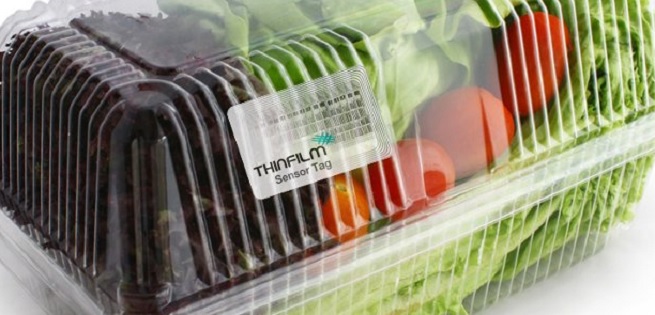Thinfilm and Xerox Pursue Printed Electronics for IoT Chips
January 26, 2015
Thinfilm — a Norwegian tech firm with 90+ employees that also does business as Thin Film Electronics USA — has a deal with Xerox to produce electronic chips that print their features atop thin surfaces. Thinfilm could manufacture up to a billion “printed electronics” chips per year for memory, processors, and sensors designed for connected devices and objects as part of the Internet of Things. The company envisions significant cost savings and increased efficiency in teaming “smart labels” with connectivity tech such as NFC and the Internet-connected cloud.
For example, a sensor positioned on a smart label could monitor the temperature of a package of meat during transport and use near-field communications to read the sensors and then share the related data via the cloud.
Thinfilm purchased electronics firm Kovio last year to build an NFC innovation center in San Jose, California. The company has been working with the Xerox Palo Alto Research Center in recent years to develop the printed electronics tech.
Xerox has licensed the company’s proprietary tech to manufacture Thinfilm Memory Labels, intended to replace bar codes on traditional labels for food and other packaged goods.
“The strategic partnership with printing giant Xerox will enable Thinfilm to commercialize its printed electronics, which have been part of a grand technology vision for decades,” reports VentureBeat.
“Rather than fabricating its chips in a traditional silicon chip factory, Thinfilm has figured out how to print circuitry for memory chips (and soon logic chips) on top of flexible substrates such as plastic or paper. If the plan succeeds, Thinfilm and Xerox could imbue an enormous number of disposable goods with intelligence.”
“In our minds, this is an extension of the Internet of Things in a new dimension,” said Davor Sutija, chief exec of Thin Film Electronics USA. “There’s only 20 billion chips a year that are manufactured. Xerox is going to put in place enough capacity to print a billion chips. That is 5 percent of the worldwide capacity for making chips. Printing is immensely scalable, and Xerox can scale it.”


No Comments Yet
You can be the first to comment!
Sorry, comments for this entry are closed at this time.